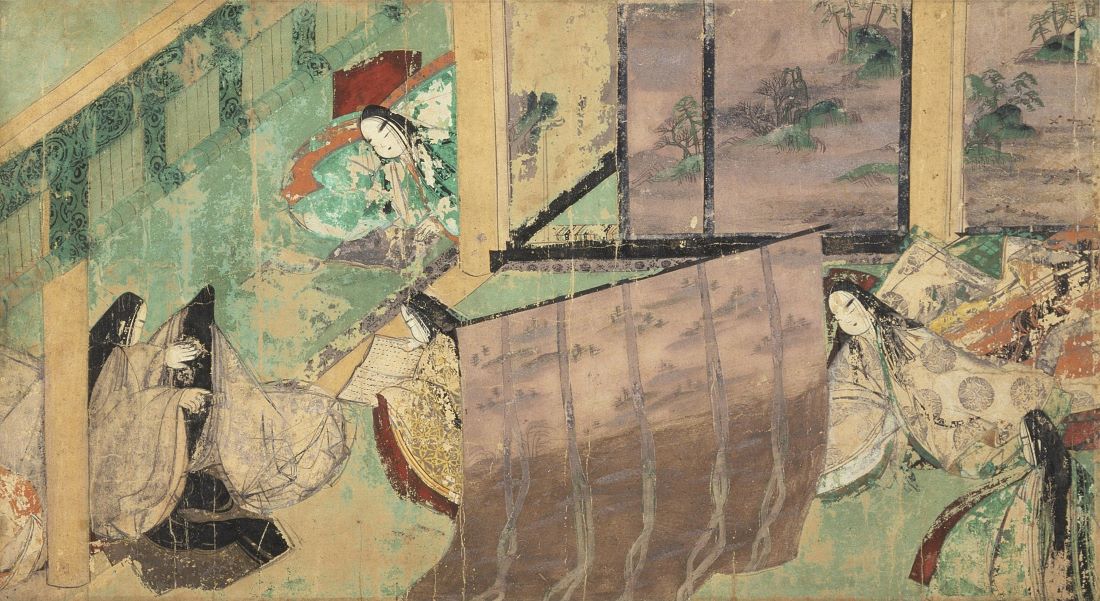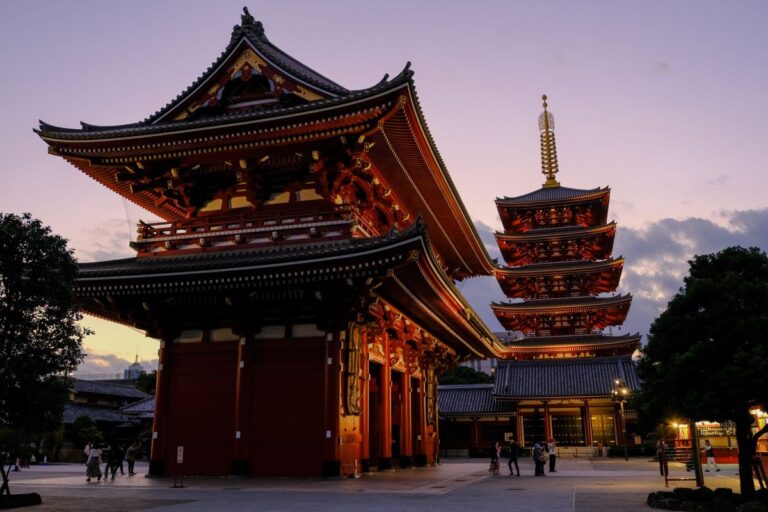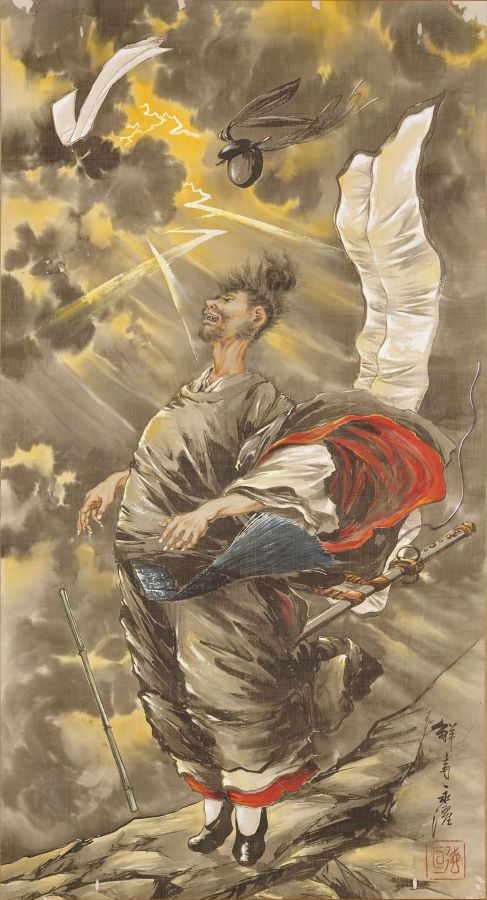The Heian period was a significant time in Japanese history, lasting from 794 to 1185. It was named after the new imperial capital, Heian-kyō (modern-day Kyoto), where a flourishing culture of refinement and poetic subtlety developed. During this time, the government and its administration were dominated by the powerful Fujiwara clan, who were eventually challenged by the Minamoto and Taira clans.
One of the most notable aspects of the Heian period was the development of Japanese literature, including the creation of the world’s first novel, The Tale of Genji, by Murasaki Shikibu. The period was also marked by the emergence of new forms of Buddhism, including the Tendai and Shingon sects, and the introduction of Chinese-inspired art, architecture, and fashion.
Key Takeaways:
- The Heian period lasted from 794 to 1185 and was named after the new imperial capital, Heian-kyō.
- The powerful Fujiwara clan dominated during this time.
- Saw the development of Japanese literature, including the world’s first novel, The Tale of Genji.
- New forms of Buddhism, including the Tendai and Shingon sects, emerged.
- Marked by the introduction of Chinese-inspired art, architecture, and fashion.
- Followed by the Kamakura period, which saw the rise of the samurai class.
- Had a lasting influence on Japanese arts and culture.
Historical Context

The Heian period is a significant era in Japanese history that lasted from 794 to 1185 CE. It was named after the capital city of Heian-kyo, which was established by the Emperor Kammu in 794 CE. The Heian period was a time of relative peace and stability in Japan, and it saw the flourishing of Japanese culture and art.
During this period, Japan was ruled by the imperial court, which was made up of aristocrats and nobles. The emperor was considered the divine ruler of Japan and was revered by the people. However, the real power lay in the hands of the Fujiwara clan, who served as regents for the emperor and controlled the government for much of the Heian period.
The Heian period was also a time of great change and transformation in Japan. It saw the emergence of a distinct Japanese culture that was heavily influenced by Chinese culture. The aristocracy of the Heian period were avid patrons of the arts, and they supported the development of literature, poetry, calligraphy, and painting. The Heian period is known for its rich literary tradition, which produced works such as The Tale of Genji, The Pillow Book, and The Tale of the Heike.
The Heian period was also marked by the rise of Buddhism in Japan. Buddhism had been introduced to Japan in the 6th century, but it was during the Heian period that it became firmly established as a major religion in Japan. The aristocracy of the Heian period were strong supporters of Buddhism, and they built many temples and shrines throughout Japan.
Overall, the Heian period was a time of great cultural, political, and social change in Japan. It saw the emergence of a distinct Japanese culture that was heavily influenced by Chinese culture, and it laid the foundation for many of the cultural traditions that are still practiced in Japan today.
Culture and Society
During the Heian period, Japan experienced a cultural renaissance that had a significant impact on Japanese arts and literature. The aristocracy of the time developed a culture of refinement and poetic subtlety that would have a lasting influence on Japanese culture.
One of the most notable aspects of Heian culture was the rise of courtly literature, including poetry, diaries, and essays. Many of these works were written by women, who played an active role in the cultural life of the time. The most famous of these works is the Tale of Genji, a novel written by the noblewoman Murasaki Shikibu that is widely regarded as one of the greatest works of Japanese literature.
Another important aspect of Heian culture was the development of a distinctive Japanese style of painting known as Yamato-e. This style featured bright colors, bold outlines, and a focus on naturalistic depictions of landscapes and everyday life. Yamato-e paintings often featured scenes from court life, as well as depictions of nature and the changing seasons.
Religion also played an important role in Heian society, with Buddhism and Shintoism both having a significant influence on cultural and artistic expression. Buddhist teachings and practices, such as Pure Land Buddhism, became increasingly popular during the Heian period, and many important Buddhist temples and shrines were built during this time.
Overall, the Heian period was a time of great cultural and artistic flourishing in Japan, with the aristocracy of the time playing an active role in shaping the cultural landscape of the country. The legacy of Heian culture can still be seen in many aspects of modern Japanese society, from literature and art to religious practices and customs.
Art and Literature

The Heian period is known for its flourishing culture, which was dominated by aesthetic concerns and produced art and literature that continues to influence Japanese culture today. The aristocratic Fujiwara family, who held significant political power during this time, were also patrons of the arts and played a key role in shaping the cultural landscape of the Heian period.
One of the most notable works of literature from this period is The Tale of Genji, written by the noblewoman Murasaki Shikibu. This epic novel is often considered the world’s first novel and is a masterpiece of Japanese literature. It tells the story of the life and loves of the titular character, a nobleman at the Heian court, and offers a fascinating window into the world of the aristocracy during this period.
Another important work of literature from the Heian period is the Pillow Book, written by Sei Shonagon, a lady-in-waiting at the court of Empress Consort Teishi. This book is a collection of anecdotes, observations, and musings on life at the Heian court, and offers a glimpse into the daily life and customs of the aristocracy during this time.
The Heian period was also a time of great artistic achievement, particularly in the fields of painting and calligraphy. The aristocracy placed great value on the arts, and many nobles were themselves accomplished artists. One of the most famous artists of the Heian period was Fujiwara no Yukinari, who was known for his elegant calligraphy and his patronage of the arts.
In addition to calligraphy, painting was also a popular art form during the Heian period. One of the most famous examples of Heian-era painting is the Choju-jinbutsu-giga, a set of four scrolls that depict anthropomorphic animals engaged in various human activities. These scrolls are considered a masterpiece of Japanese art and are widely regarded as a national treasure.
Religion and Philosophy
The Heian period was a time of great religious change and development in Japan. Buddhism grew rapidly during this period, and it became the dominant religion of the imperial court and the elite. Buddhist philosophy and morality became entwined with Shinto belief, and occasionally Buddhist monks even served as Shinto priests.
One of the most significant religious developments of the Heian period was the emergence of Pure Land Buddhism, which emphasized the importance of faith in the Amida Buddha as a means of attaining salvation. This new form of Buddhism was particularly popular among the common people, who found it more accessible than the more esoteric forms of Buddhism favored by the elite.
Alongside the growth of Buddhism, Confucianism also had an important influence on Heian period society. Confucianism emphasized the importance of social order, hierarchy, and duty, and its teachings had a profound impact on the development of Japanese culture and society.
Philosophically, the Heian period was characterized by a focus on the impermanence and transience of life. This emphasis on the fleeting nature of existence is reflected in many works of literature from the period, such as the famous Tale of Genji. The philosophy of impermanence also had a significant impact on the development of Japanese art, particularly in the form of the wabi-sabi aesthetic, which celebrates the beauty of imperfection and impermanence.
Decline and Legacy
The Heian period came to an end in 1185 CE, when Minamoto Yoritomo took control and began the transition to feudalism. Samurai warriors began to support the shogunate, and the emperor’s power was greatly reduced. The decline of Heian Japan was also the result of the failure of the nation’s agriculture system and the resulting chaotic conditions.
Despite its decline, the Heian period left a lasting legacy on Japanese culture. The period saw a great flourishing in Japanese literature, with the creation of classic works such as The Tale of Genji by Lady Murasaki and The Pillow Book by Sei Shonagon. The period also saw the development of the Japanese writing system, with the creation of kana, a syllabic writing system that made writing easier and more accessible to a wider range of people.
The Heian period also saw the development of courtly culture, with an emphasis on aesthetics, refinement, and elegance. This culture was characterized by a love of beauty, elegance, and simplicity, and it greatly influenced later Japanese art and culture. The period also saw the development of Buddhism in Japan, which had a profound impact on Japanese religion and culture.
In conclusion, the Heian period was a time of great cultural flourishing in Japan, characterized by the development of literature, the writing system, courtly culture, and Buddhism. While the period ultimately came to an end, its legacy continues to influence Japanese culture to this day.



